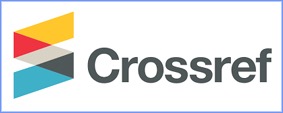Analisis Kesalahan Ejaan yang Disempurnakan (EYD) dalam Proposal Skripsi Mahasiswa
DOI:
https://doi.org/10.29240/estetik.v1i1.508Keywords:
EYD analysis, thesis proposal, student of eighth semesterAbstract
This text study objective was to determine how much the level of student writing errors made in the use of written language in developing a thesis proposal. The method used in the research data penganalisissan this text is the text method , which collects a number of text samples, further reading and doing analyzing student writing done , and also uses descriptive method of analysis. As the results, 1) error writing uppercase (capital) in the student proposal STAIN Curup VIII semester of academic year 2012/2013 as many as 850 words, with a percentage of 40.59 %; 2) error writing spelling on student proposals STAIN Curup VIII semester of academic year 2012/2013 as many as 681 words, with a percentage of 32, 52 %; 3) error writing prepositions (di, ke and dari) the student proposal STAIN Curup VIII semester of academic year 2012/2013 as many as 282 words, with a percentage of 13.46 %; 4) error writing punctuation dot (.), comma (,), colon (:), semicolon (;), and quotes (") on student proposals as many as 281 words, with a percentage of 13.41 %.
Downloads
References
Sumber Rujukan
Abdul Chaer, Linguistik Umum. Jakarta: Rineka Cipta, 2002
Abdul Halim Hanafi, Metodologi Penelitian Bahasa untuk Penelitian, Tesis, & Disertasi, Jakarta: Diadit Media Press, 2011
Alwi, Hasan et all,Tata Bahasa Baku Bahasa Indonesia, Jakarta: Balai Pustaka, 2003
Departemen Pendidikan Nasioal Republik Indonesia, Kamus Besar Bahasa Indonesia. Jakarta: 2008
Depdikbud, Tata bahasa Baku Bahasa Indonesia, (Jakarata: Balai Pustaka. 1988)
Gie, The Liang, Terampil Mengarang, Yogyakarta: Andi Offset, 2002
Keraf, Gorys. Sebuah Pengantar Kemahiran Bahasa. Ende: Nusa Indah. 1993
Lexi J Moleong, Metodologi Penelitian Kulaitatif, Bandung: Remaja Karya, 2004
Mungin Edi Wibowo, Buku Penuntun Membuat Thesis dan Skripsi, Jakarta: 2003
Prastyaningsih, Luluk, Ilmu Bahasa (Linguistik), Malang: FKIP Unisma, 2001
Pusat Perbukuan Departemen Pendidikan Nasional, Tata Bahasa, Jakarta: 1988
Pusat Pembinaan dan Pengembangan Bahasa Departeman Pendidikan dan Kebudayaan Republik Indonesia, Pedoman Umum Ejaan Bahasa Indonsia yang Disempurnakan & Pedoman Umum Pembentukan Istilah, Bandung: Pustaka Setia, 1996
Pusat Pembinaan dan Pengembangan Bahasa, Depdikbud. Pedoman Umum Ejaan Bahasa Indonesia Yang Disempurnakan. Bandung : Pustaka Setia,1987
Ronny Kountur, Metode Penelitian untuk Penulisan Skripsi dan Tesis (Jakarta: PPM, 2004)
Wirjosoedarmo, Soekono, Tata Bahasa bahasa Indonesia. Untuk SMA_Universitas Pegangan Guru. Surabaya: Sinar Wijaya, 1987
Werdiningsih, Dyah, Menulis I. Malang: FKIP Unisma, 2002
Widjajanti, Sri. Kesalahan dan Penggunaan Kalimat pada Skripsi Mahasiswa Jurusan Non-Bahasa dan Sastra Indonesia Universitas Madura, Malang: Pascasarjana (Tesis), 2006)
Downloads
Published
How to Cite
Issue
Section
Citation Check
License
Copyright (c) 2018 Ummul Khair

This work is licensed under a Creative Commons Attribution-NonCommercial-ShareAlike 4.0 International License.
Authors who publish with ESTETIK : Jurnal Bahasa Indonesia agree to the following terms:
- Authors retain copyright and grant the journal right of first publication with the work simultaneously licensed under a Creative Commons Attribution-NonCommercial-ShareAlike 4.0 International License (CC BY-NC-SA 4.0) that allows others to share the work with an acknowledgment of the work's authorship and initial publication in this journal.
- Authors are able to enter into separate, additional contractual arrangements for the non-exclusive distribution of the journal's published version of the work (e.g., post it to an institutional repository or publish it in a book), with an acknowledgment of its initial publication in this journal.
- Authors are permitted and encouraged to post their work online (e.g., in institutional repositories or on their website) prior to and during the submission process, as it can lead to productive exchanges, as well as earlier and greater citation of published work (See The Effect of Open Access).






